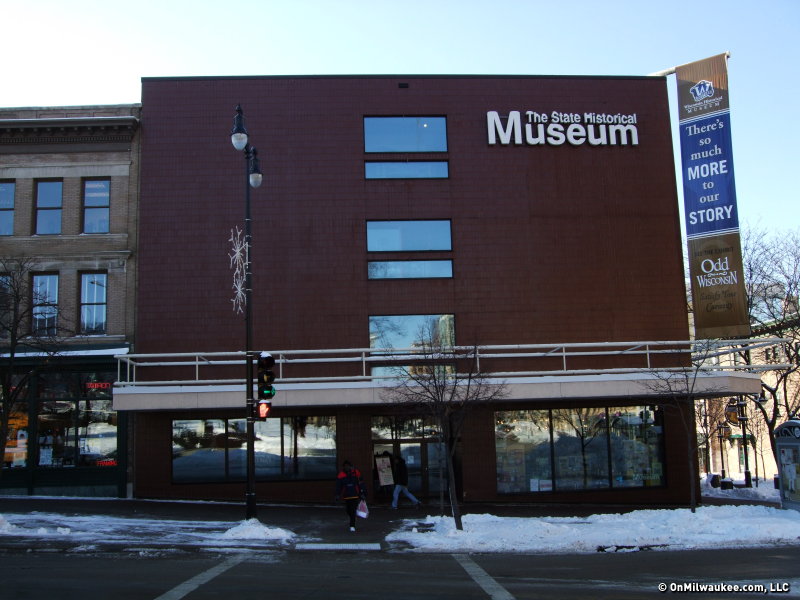If you think going to a historical museum means boring times, looking at a lot of "old stuff," think again.
The Wisconsin Historical Museum, located on the Capitol square in Madison, has "old stuff" -- that's why we have museums -- but presents that stuff and information about it in an entertaining, contemporary way.
And, it's open all year, with both permanent and rotating exhibits that can be educational and fun for people of all ages.
For example, right now, "World Series Wisconsin" is on display. Its run has been extended to Jan. 12.
This exhibit marks the 50th anniversary of the Milwaukee Braves' World Series victory and the 25th anniversary of the Milwaukee Brewers' American League pennant. Included are dozens of authentic, game-used objects -- jerseys, jackets, caps, helmets, bats, balls, gloves, spikes, and more -- many of them from the peak seasons of 1957 and 1982, and many actually worn and used by such baseball greats as Hank Aaron, Eddie Mathews, Red Schoendienst, and Warren Spahn of the Braves, and Rollie Fingers, Paul Molitor and Robin Yount of the Brewers.
Original artifacts from Milwaukee County Stadium, fan souvenirs, historical photographs, and original radio broadcast clips and television footage also help bring the excitement of these seasons to life.
Two permanent exhibits also are at the museum. "People of the Woodlands: Wisconsin Indian Ways" can be found on the Second Floor Galleries. This exhibit tells stories of native people living in Wisconsin before and after the fur trade period. You can enter an Aztalan-style house and discover the seasonal activities of Woodland peoples in the 1800s-1900s.
"On Common Ground: Two Hundred Years of Wisconsin History" is on the Third and Fourth Floor Galleries. Here you can explore themes unique to Wisconsin history from settlement days to the present. Visitors can discover a frontier lead mine, track immigration routes to the state, explore work and play in a lumber camp, and examine Wisconsin's political heritage.
You'll find these exhibits to be put together in an artistic, often interactive way. This is history conveyed very much in a 21st century manner.
The museum offers many programs in addition to its exhibits. "A Taste of Wisconsin Traditions" is an adult lecture and dinner series that explores ordinary and unique examples of cultural heritage in Wisconsin.
"History Sandwiched In" is an informal brown bag lunch-and-lecture series, held the first and third Tuesdays through November. Visitors are invited to bring a lunch and enjoy a program of historical perspective.
Upcoming programs include one on Curly Lambeau, the Packers' legendary founder and coach, on Dec. 11 and "They Came to Bowl" on Jan. 15. Yes, it deals with bowling, a traditional favorite for many Milwaukeeans.
Recent programs included "Listening to the Past: Try It," a workshop for Brownie Girl Scouts; "Private Soldiers" A Year in Iraq with a Wisconsin National Guard Unit, featuring the soldiers themselves telling their stories; and American Folk Art Quilts, with author Maggie McCormick Gordon exploring the European influence on quilting in this country. Films and presentations are changing all the time.
If you would like to research a historical topic, the museum features many resources, some of which can also be accessed online.
But, the best way to see the museum, its exhibits and collections is to go there in person. The hours of operation are Tuesday through Saturday, 9 a.m. to 4 p.m. The museum is closed Sunday and Monday and most major holidays.
The Wisconsin Historical Society maintains the museum and historic sites around the state. Some have been featured on OMC in the past and others will be in the future.




